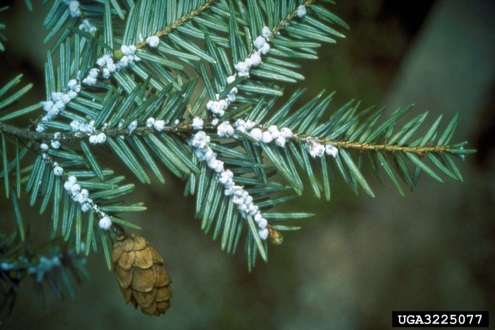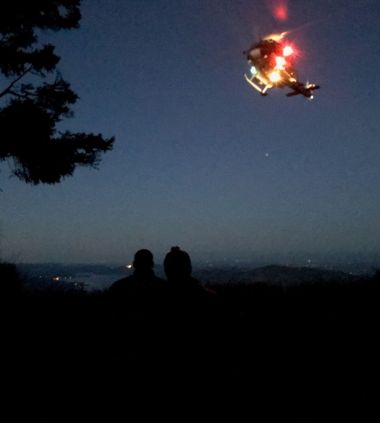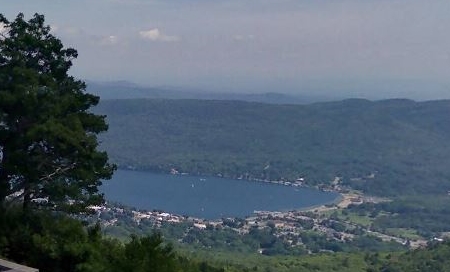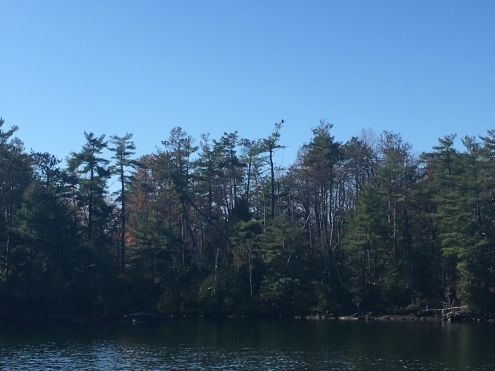
HWA infestations can be most noticeably detected by the small, white, woolly masses produced by the insects that are attached to the underside of the twig, near the base of the needles.
The New York State Department of Environmental Conservation (DEC) and partners recently issued an update about ongoing efforts to limit the spread of the invasive pest Hemlock Wooly Adelgid (HWA) on Forest Preserve lands in Washington County as part of an ongoing, multi-year initiative. DEC confirmed the HWA infestation in August 2020, and began treatment in October on affected hemlock trees in the Glen Island Campground on the shores of Lake George.
Treatment began Oct. 6, 2020 along the shorelines of Lake George and was conducted over a four-week period by DEC staff. DEC prioritized the infestation at Paradise Bay due to the site’s size and levels of infestation. Crews treated 2,374 trees with insecticide on 138 acres of Paradise Bay and injected insecticides directly into the trunks of 80 trees close to sensitive areas. In addition, the New York State Hemlock Initiative released 620 Laricobius beetles, a biological control for HWA, in the treatment area to feed on HWA.
Since the initial finding of HWA at Glen Island, DEC and its partners continued to survey for the insect in surrounding areas. These surveys led to new findings of HWA at Shelving Rock; Buck Mountain Trail Head; Dome Island, private property along the southern shore of Lake George in Queensbury; and Moreau Lake State Park. To address the infestation, DEC is planning consecutive annual treatments to treat many of the trees in the infested areas, as well as additional strategies. Spring treatments at Glen Island Campground will begin after ground thaw when trees begin to transpire and will take up insecticides and end before the campground opens for the season. Treatment dates and strategies are being determined and will help limit the spread of HWA and protect accessible priority hemlock resources that provide habitat and water quality protections, opportunities for recreation, and aesthetic benefits.
Early detection and rapid response to invasive pests is central to protecting New York’s natural resources. DEC and its partners’ efforts to further prevent the spread of HWA are critical to protecting the hemlock forests in the Lake George watershed and greater Adirondack Park.
Signs of HWA on hemlock trees include white wooly masses (ovisacs) about one-quarter the size of a cotton swab on the underside of branches at the base of needles, gray-tinted foliage, and needle loss. DEC is asking the public to report signs of HWA:
Take pictures of the infestation signs as described above (include something for scale such as a coin);
Note the location (intersecting roads, landmarks, or GPS coordinates);
Contact DEC or the local Partnership for Regional Invasive Species Management (PRISM) by visiting DEC’s website.
Report the infestation to iMapInvasives; and
Slow the spread of HWA by cleaning equipment or gear after it has been near an infestation and by leaving infested material where it was found.








